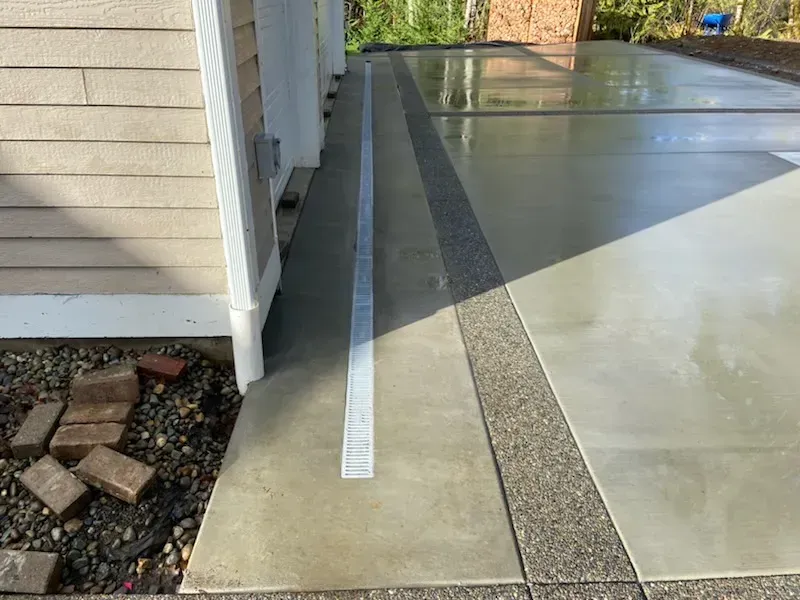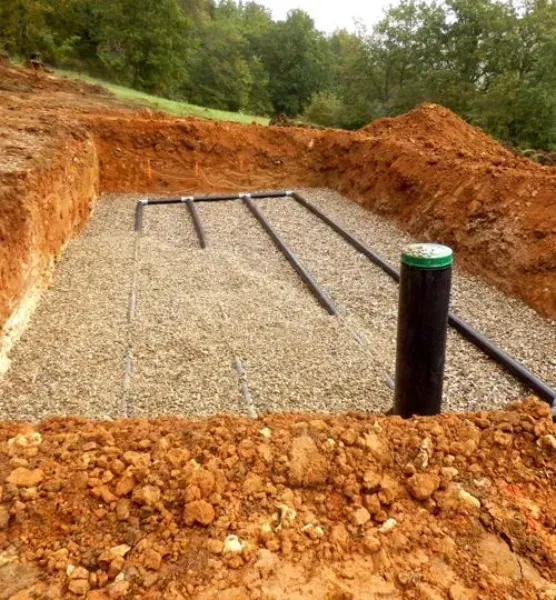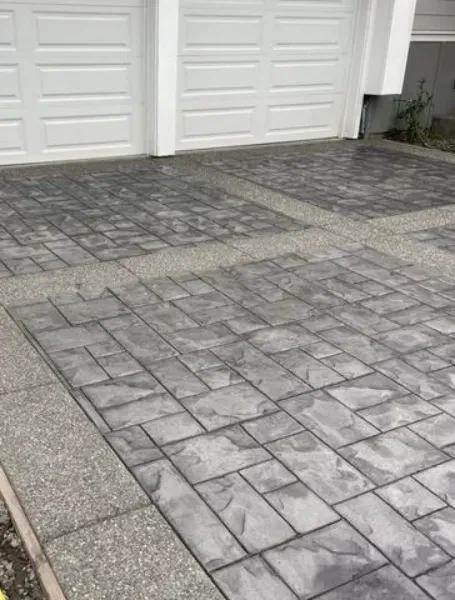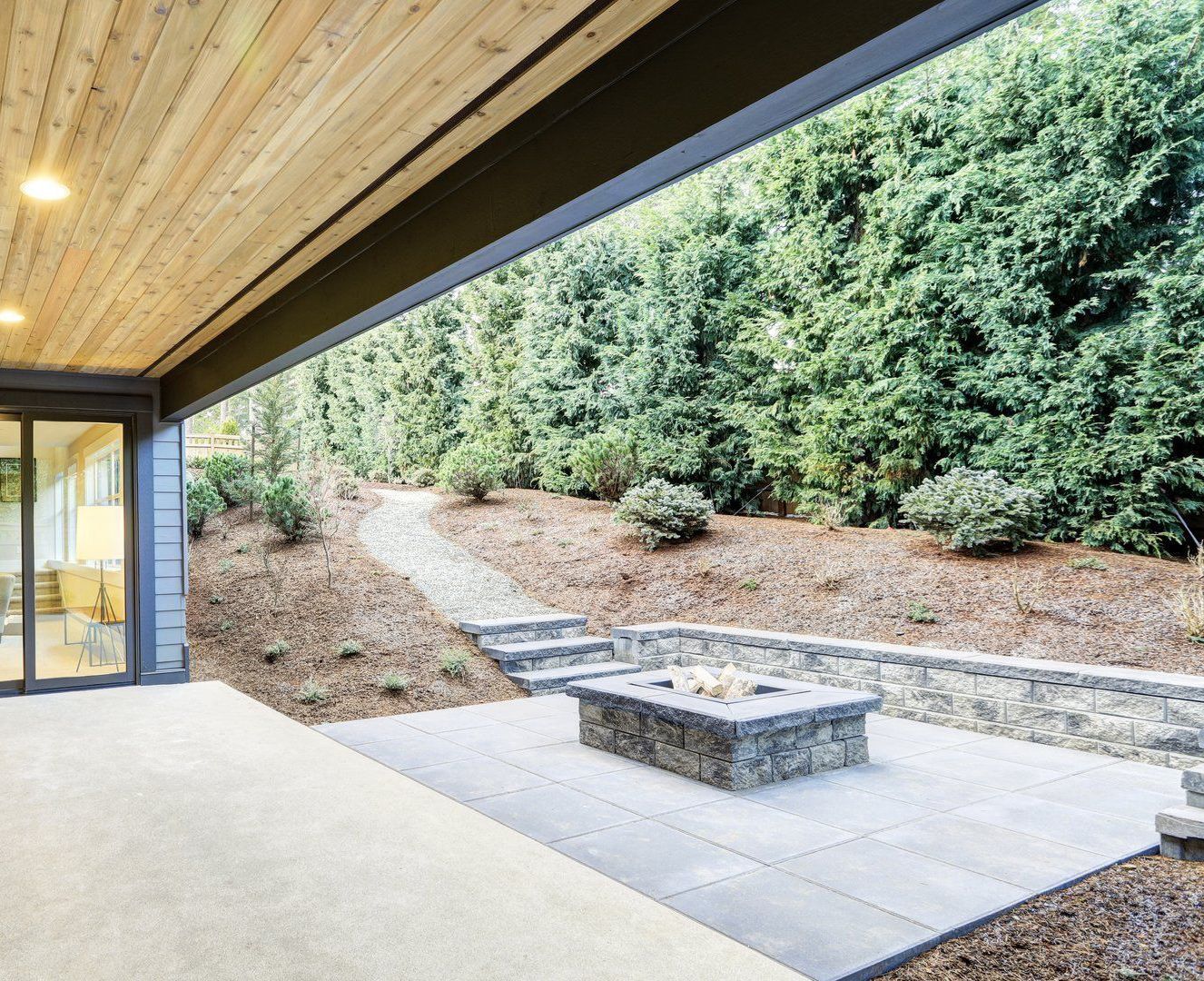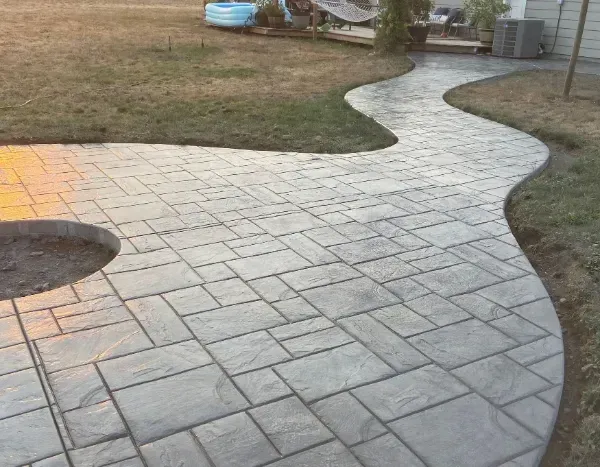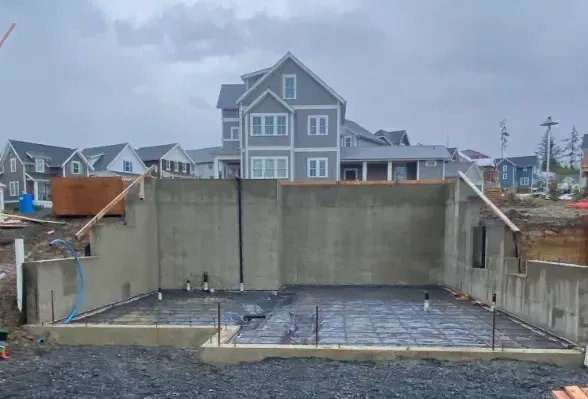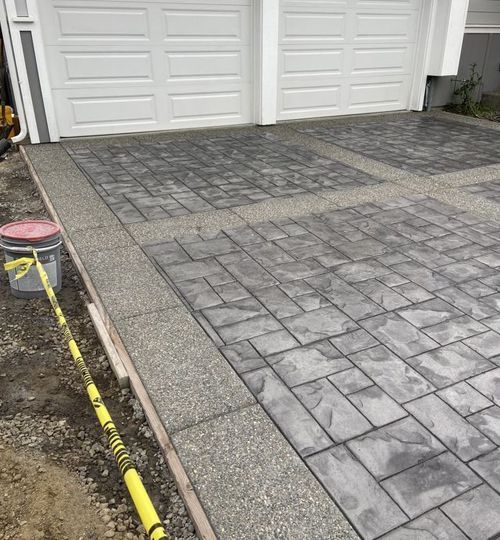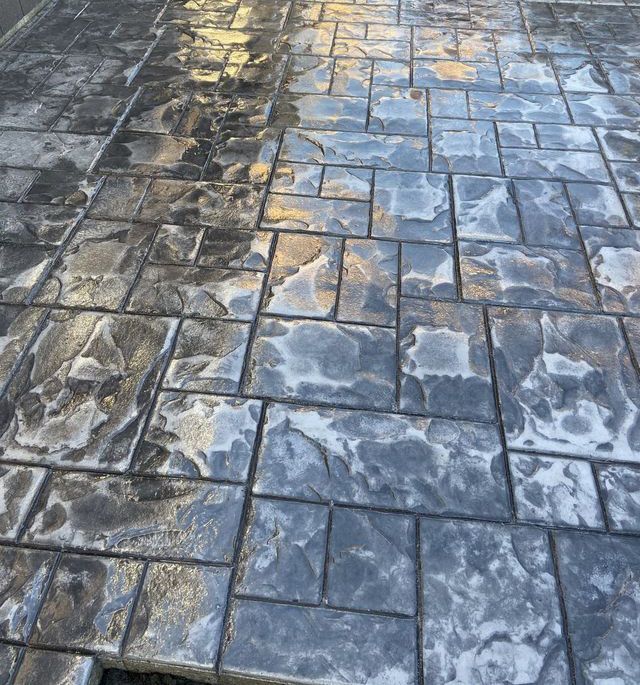1363 Old Israel Rd SW , Tumwater , WA 98512
How to Build a Concrete Driveway, Step By Step
A well-constructed concrete driveway is a practical and valuable investment for any property. It offers a long-lasting solution that enhances both aesthetics and functionality. Hence, DIY-building a concrete driveway is a rewarding project.
This guide provides a step-by-step process for constructing a durable and attractive driveway. From planning to maintenance, we'll cover everything you need to know, including essential safety tips. Let's get started on creating a long-lasting concrete driveway.
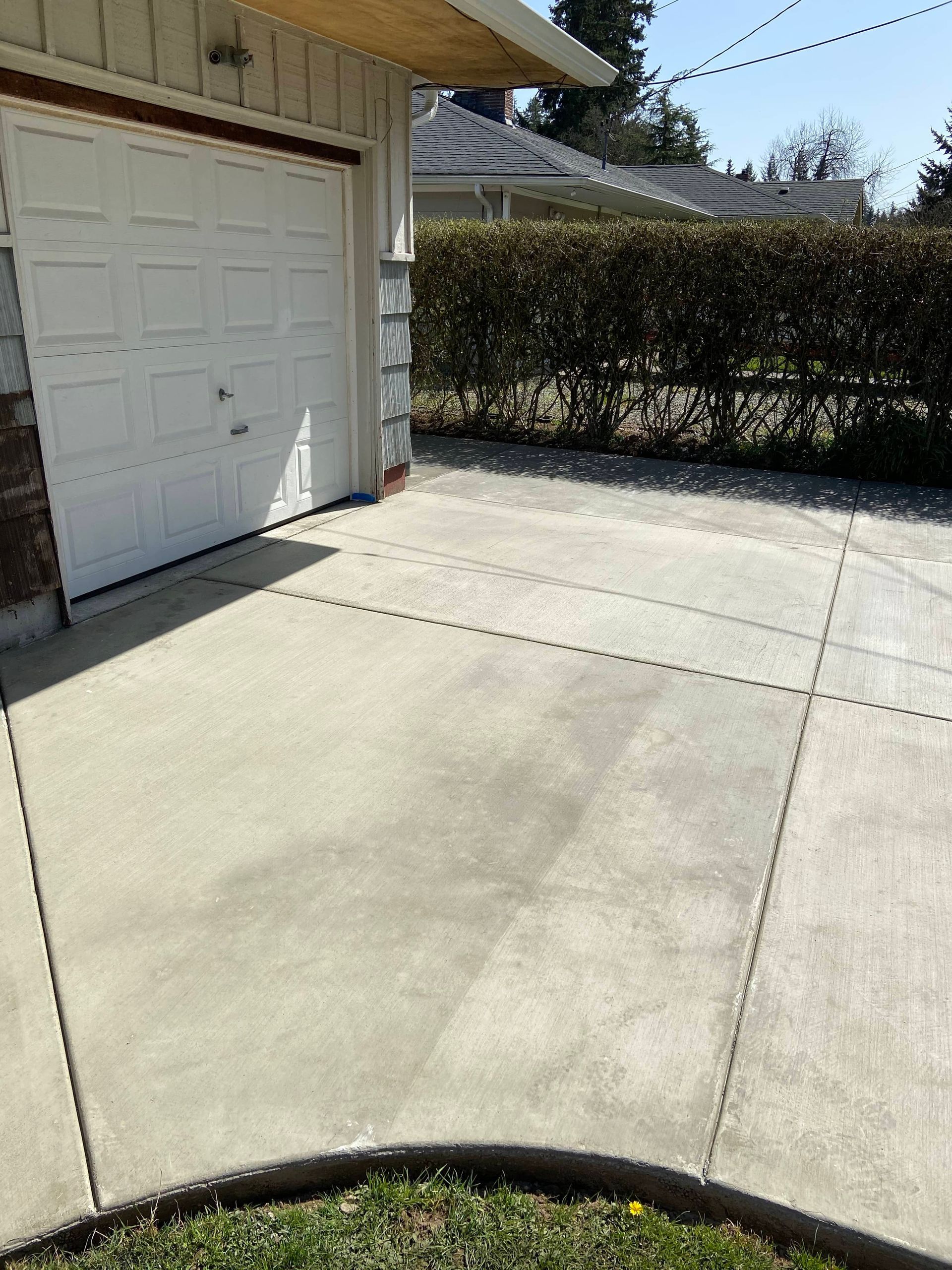
Concrete Safety
When conducting a DIY construction project, it's important to prioritize safety throughout the process. Here’s how to stay safe during your concrete driveway construction:
Personal Protective Equipment (PPE)
Wear safety goggles, gloves, long sleeves, and sturdy footwear to protect against concrete dust, chemicals, and potential injuries from tools or equipment.
Lifting and Moving
Utilize equipment like wheelbarrows or concrete mixers for transporting and pouring concrete.
Handling Chemicals
Follow the manufacturer’s instructions when mixing concrete or using additives. Take precautions to avoid skin contact or inhaling harmful chemicals. Work in well-ventilated areas and consider respiratory protection if necessary.
Tools and Equipment
Inspect tools before use to ensure they're in good condition. Follow safety guidelines for operating machinery such as concrete saws or power trowels. Always disconnect power sources when not in use.
Slips and Trips
Concrete surfaces can be slippery, especially when wet. Place warning signs or barriers around work areas, wear slip-resistant footwear, and promptly clean up spills to prevent accidents.
Heat and Sun Exposure
Working with concrete in hot weather can lead to dehydration and heat-related illnesses. Stay hydrated, take frequent breaks in shaded areas, and wear sunscreen and protective clothing.
Standard Quality of a Concrete Driveway
To build a durable, functional, and aesthetically pleasing concrete driveway, it is necessary to know the essential elements of a standard-quality driveway:
Proper Thickness
A standard-quality concrete driveway typically has a thickness of 4 to 6 inches. This thickness provides sufficient strength to support vehicles and withstand the stresses of regular use.
Adequate Reinforcement
While not always necessary, adding reinforcement such as wire mesh or rebar can enhance the strength and durability of the driveway, reducing the likelihood of cracking or shifting over time.
Correct Mix Design
The concrete mix used for the driveway should be formulated to meet the specific requirements of the project, considering factors such as climate, soil conditions, and intended use. A proper mix design ensures the concrete and the foundation achieve the desired strength and durability.
Proper Installation
The installation process is crucial for ensuring the longevity and stability of the concrete driveway. This includes adequate site preparation, proper placement and consolidation of the concrete, and careful finishing techniques to achieve a smooth and uniform surface.
Adequate Drainage
Proper drainage is essential for preventing water accumulation and potential damage to the driveway. The surface should be sloped away from structures and equipped with adequate drainage channels or pipes to direct water away from the area.
Proper Curing
After the concrete is poured, it must be properly cured to achieve maximum strength and durability. This involves keeping the concrete moist and protected from excessive heat or cold during the curing period, typically for at least 7 days.
How to Build a Concrete Driveway, Step-by-Step
Follow these carefully executed steps to build your concrete driveway:
Planning and Preparation
A. Determine the dimensions and layout of the driveway.
- Measure the area where the driveway will be installed.
- Consider factors such as the number of vehicles, space for turning, and any landscaping features.
B. Obtain the necessary permits and permissions.
- Check local building codes and regulations.
- Obtain the permits and permissions required for driveway construction from the appropriate authorities.
C. Do a cost estimate.
- Calculate the cost of materials, tools, labor, and any additional expenses.
- Consider hiring professionals for tasks beyond your expertise.
D. Gather materials and tools.
- Purchase concrete mix, gravel, reinforcement materials (if needed), wooden forms, tools (such as shovels, wheelbarrows, and tampers), and personal protective equipment.
E. Prepare the site:
1. Clear the area of vegetation and debris.
- Remove any plants, rocks, or other obstacles from the driveway site.
- Use a shovel, rake, or landscaping tools to clear the area thoroughly.
2. Excavate the soil to the required depth.
- Use a shovel, excavator, or backhoe to dig out the soil to the desired depth, typically around 6 to 8 inches for a residential driveway.
3. Compact the soil subgrade.
- Use a compactor or hand tamper to compact the soil subgrade evenly.
- Ensure the surface is level and firm to provide a stable base for the concrete.
Install Wooden Forms
- Position wooden forms along the edges of the excavated area to define the shape and dimensions of the driveway.
- Secure the forms in place with stakes and ensure they are level and properly aligned.
Dig Out Topsoil and Level Out Subbase
- Remove any remaining topsoil or soft soil from within the forms.
- Fill the excavated area with a layer of gravel or crushed stone to create a stable subbase.
- Use a rake or shovel to spread the gravel evenly, and compact it with a compactor or hand tamper.
Install Reinforcement and Drainage (Optional)
- Install reinforcement materials, such as wire mesh or rebar, to reinforce the concrete and prevent cracking.
- Ensure proper drainage by sloping the surface away from structures and installing drainage channels or pipes, if necessary.
Pour the Concrete
- Mix concrete according to the manufacturer's instructions, using a concrete mixer or mixing by hand in a wheelbarrow.
- Pour the concrete evenly into the forms, starting at one end and working your way to the other.
- Use a screed board to level the surface and remove excess concrete, ensuring a smooth and even finish.
Finishing
- Use a bull float to smooth the surface and remove any imperfections.
- Add texture or non-slip additives if desired.
- Create control joints with a grooving tool to prevent cracking.
- Finish the edges of the driveway with an edging tool for a clean and professional look.
Curing
- Cover the freshly poured concrete with plastic sheeting or curing compound to retain moisture and promote proper curing.
- Allow the concrete to cure for at least 7 days before subjecting it to heavy loads or vehicular traffic.
Remove the Forms
- Once the concrete has cured sufficiently, carefully remove the wooden forms.
- Clean up any debris or excess concrete from the driveway surface.
Maintenance Tips to Sustain Your Concrete Driveway
Preserve the integrity, prolong the lifespan, and enhance your property’s curb appeal with these maintenance tips:
Regular Cleaning
Sweep debris and use a mild detergent with a pressure washer for stains.
Sealant Application
Apply a concrete sealer every 1–3 years to protect against moisture and UV damage.
Repair Cracks Promptly
Fill cracks with a concrete patching compound to prevent further damage.
Control Weed Growth
Use weed killers or barriers to inhibit weed growth along cracks.
Avoid Heavy Loads
Minimize stress by avoiding heavy loads and sharp objects on the surface.
Protect Against Freeze-Thaw
Use de-icing agents sparingly and avoid metal shovels or plows.
Maintain Drainage
Keep gutters clear and consider drainage systems to prevent pooling.
Perform Inspections
Conduct regular inspections for damage like spalling or settling, and address it promptly.
Bottom Line
Building a concrete driveway is a rewarding endeavor that enhances both the functionality and aesthetic appeal of your property. By following this How to Build a Concrete Driveway, Step by Step guide provided, you can create a durable and attractive driveway that stands the test of time. With attention to safety, quality, and ongoing care, your concrete driveway will continue to serve as a valuable investment for years.
If you're not comfortable tackling this project on your own,
Northwest Concrete is here to provide you with reliable assistance. Additionally, we offer comprehensive concrete services, such as
resurfacing repair,
stamped concrete,
staining, and more!
At Northwest Concrete, we ensure quality work and strive to consistently deliver
the best results.
Contact us today for a consultation on how we can achieve your concrete vision!

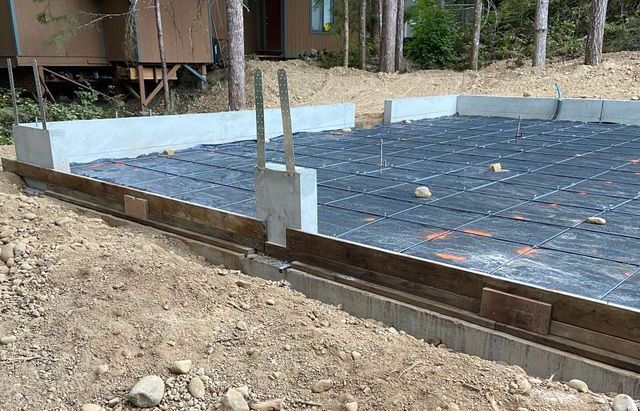
CONTACT US
We will get back to you as soon as possible.
Please try again later.
AREAS SERVED
Tenino
Centralia
Lakewood
Dupont
Steilacoom
Roy
Littlerock
NORTHWEST CONCRETE
Tumwater, Washington and the surrounding areas
Images provided on this website are for personal, non-commercial use. Republication, retransmission, or reproduction of images provided is strictly prohibited.


